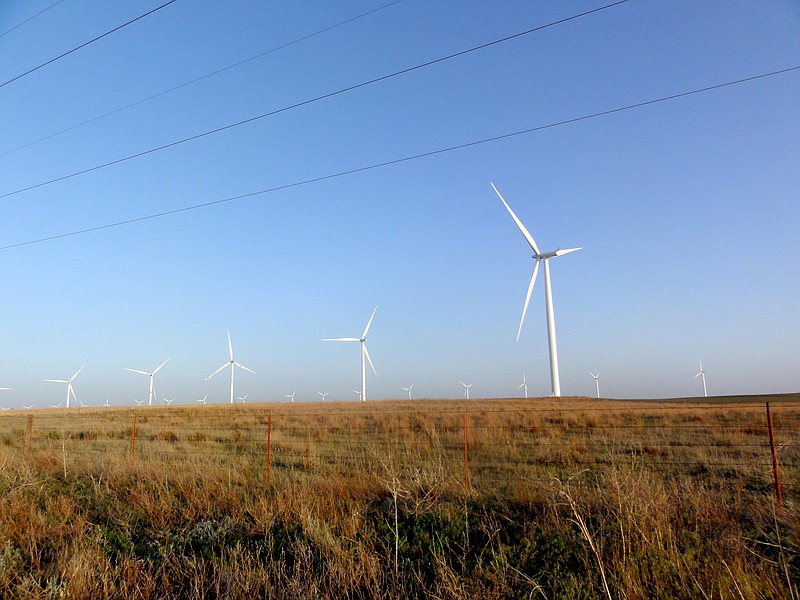A Houston company that plans to build a $2 billion transmission line from Oklahoma to Tennessee has gained approval from state regulators to extend the line into Memphis.
Clean Line Energy Partners LLC said Tuesday the approval by Tennessee Regulatory Authority moves the company one step closer toward erecting a 700-mile line to bring wind energy from the plains of Texas and Oklahoma to the hills of the Tennessee Valley.
Construction may begin as soon as next year and the 3,500-megawatt line could be in operation as soon as 2018 if developers gain required regulatory approval and utilities agree to buy the wind-generated power the line will carry.
Before construction of the direct-current power line may begin, however, the privately owned transmission company must still gain approval from the U.S. Department of Energy for the Southwestern Power Administration to participate in the project proposed by Clean Line Energy. Arkansas regulators have raised concerns about the high-voltage electric line being built through their state, but Clean Line could build the line with regulatory approval from DOE to operate as a utility in the public interest.
Michael Skelly, president of Clean Line Energy, said the project would deliver clean, renewable energy to the Southeast and help diversify utilities' portfolios.
"The development of this important infrastructure project is an essential role that affordable renewable energy can and should play in the energy mix for Tennessee and the greater Southeast," Skelly said.
Clean Line also must still sell the Tennessee Valley Authority or other utilities in the South on buying the wind-generated power. TVA signed a letter of interest for the project in November, but the federal utility has made no commitment to buy the power that Clean Line would deliver. TVA spokeswoman Gail Rymer said TVA is still assessing its future energy needs before it will decide on the wind energy offer.
"Clean Line is one of a handful of independent transmission developers that several years ago proposed various transmission projects to TVA," Rymer said. "The system impact study is complete and TVA continues to work with Clean Line on their proposed interconnection to the TVA electric grid."
TVA currently imports some wind generation from the Midwest and the utility has set a goal of getting at least 20 percent of its power from renewable sources, including the power generated from TVA's 29 power-producing dams. TVA will need to nearly double its wind, solar, hydro and geothermal power to meet that target.
Clean Line is proposing to connect its transmission line with the Shelby interconnection in Memphis for TVA. The Tennessee Regulatory Authority approved the project on Monday.
"There would be no additional approval from the TRA unless their proposed route for the transmission facility is altered," said David Foster, chief of the TRA's Utilities Division.
To build the line through Arkansas, however, will require DOE approval. Public hearings on DOE's initial environmental assessment of the project are planned in communities along the possible routes in Arkansas, Oklahoma and Texas during January and February. There will be a public hearing next month in Millington, Tenn.
Clean Line is proposing to build a direct-current, rather than the typical AC transmission line, to limit line losses along the 700-mile path. The DC line will require Clean Line to build equipment to convert current into alternating current power for interconnection with the existing transmission grid.
Mario Hurtado, executive vice president for Clean Line, said developers expect to be able to deliver power to TVA and other Southern utilities for 4 cents to 6 cents per kilowatthour. Although wind energy is more variable than conventional power plants, Hurtado said getting the wind power from Oklahoma and Texas and using today's more sophisticated wind mills should ensure that the wind power is reliably integrated with utilities' other energy supply sources.
"We think this will help keep rates low and drive economic development," Hurtado said.
Contact Dave Flessner at dflessner@timesfreepress.com or at 757-6340.
